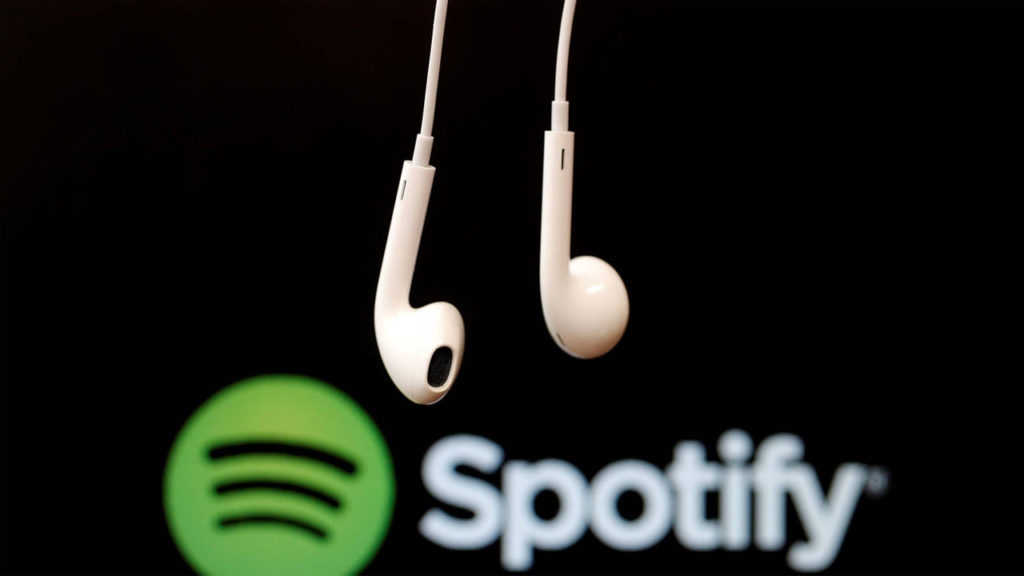Whether Spotify’s just-released financial results pave the way for the digital service to do an initial public offering of stock anytime soon is still anybody’s guess; yet, despite the much larger than expected net loss, there’s good news for the streaming service.
For one, the company is still growing at a fast clip with sales up €1 billion ($1.054 billion) to €2.93 billion ($3.09 billion) from the previous year's total of €1.93 million ($2.1 billion). As of March, the streaming service had some 50 million paying subscribers -- up from 40 million from the previous Sept. -- and a 140 million active users. But as its revenue base gets bigger, a slower growth rate comes into play as its 52.1 percent in growth for 2016 is less, percentage-wise than the 77.8 percent growth rate produced for 2015 versus its 2014 revenues of €1.084 billion ($1.14 billion).
While its net loss of €539.2 million ($568 million) was more than double the €231.8 million ($244 million) it had in the prior year, if you overlook the non-cash charge of €245 million ($258 million) to write down the discount on the €1 billion in notes (due in 2021, because Spotify didn't plan on doing a public offering within one year of that April 2016 financing), the adjusted net loss was €294.2 million ($310 million), according to one analyst. That's a 27.1 percent increase in red ink, to be sure, from 2015's $231.4 million net loss, but not as bad as the non-adjusted loss for 2016 would lead you to believe.
If the overall reported net loss is discouraging news, at least earnings before interest, taxes, depreciation and amortization held nearly steady at €161.2 million ($169.2 million) in red ink in 2016, versus the €170.7 million ($180 million) in a loss of EBITDA in the prior year, Billboard calculates.
Also good news, the company’s operating loss as a percentage of revenue has steadily decreased. In 2016, Spotify’s operating loss was €349.4 million ($368 million), which was 11.9% of revenue versus the prior year when it was €236.3 million ($238.2 million), or 12.3 percent of revenue. In 2014 it was even higher at €191.1 million ($201.3 million), or 17.6 percent of revenue.
Those decreases in operating loss, however, appear to have more to do with the rise in revenue then they do cost control; or whether Spotify can achieve economies of scale with sales and marketing and general and administrative expenses.
While product development costs held steady as a percentage of revenue in 2016 at €206.85 million ($217.9 million), or 7.1 percent of revenue, the same ratio as in 2015; general and administrative revenue grew to €175.2 million ($184.6 million), or 6 percent of revenue, from 2015’s expenditure of €105.9 million ($111.6 million), or 5.5 percent of revenue; and worse, sales and marketing costs totaled €417.9 million ($440.3 million), or 14.3 percent of revenue, from €258.7 million ($272.6 million), or 13.4 percent or revenue.
In contrast, in 2015 Spotify begun to achieve scale when all three of the above expenditures as a percentage of revenue were smaller ratios than in 2014. Its unclear why that experience wasn’t repeated in 2016, except in product development where the company says it has continued to spend heavily.
Without economies of scale kicking in, Spotify will be hard pressed to point toward a path to profitability. Yet, it so far appears to be trying a different path: Instead of getting its own internal costs under control -- employee wages and benefits continue to rise, even if at a slower pace -- Spotify has begun negotiating with music rights owners for lower royalties.
Spotify doesn’t break out exactly what’s in its cost of goods, but in addition to royalty payments to rights owners it also includes things like customer service costs, credit card and payment processing fees for subscription and salaries of certain employees.
Overall, its cost of goods in 2016 was €2.48 billion ($2.61 billion), or 84.6 percent of revenue. According to industry sources, the on-demand digital service model typically carries a cost of about 70 percent of revenue for royalty payments, of which 60 percent of revenue pays for licensing master recording and 10.5 percent of revenue for publishing royalties. Yet, those percentages are what’s known as the headline rate; each set of licenses -- master recording and publishing -- are actually set by as many as three or four formulas and whichever one produces the biggest revenue pool is the one used to calculate royalties.
In addition to the royalty pool that comes from 10.5% of revenue, publishing royalties can also be calculated by counting 50 cents per subscriber; or 21% of revenue paid to the labels, at least in 2017. (The Copyright Royalty Board just held a rate trial, which will determine royalties for the 2018-2022 period, so the cited percentages and amount per subscriber may change next year.)
Consequently, sources tell Billboard, the other publishing revenue pool formulas have often produced a publishing royalty rate of 12.5 percent of revenue from on-demand services like Spotify. Likewise that may also be happening with the other formulas used to determine the label royalties. That means instead of paying 60 percent for label royalty costs, Spotify might actually be paying something like 62 percent, and with publishing added in, a total of 74.5 percent. But since Spotify doesn’t show its actual royalty payment costs in its financials, it’s hard to estimate considering everything else added in, too.
Nevertheless, in its latest licensing endeavors Spotify has been negotiating lower royalty rates -- some sources suggest by asking as much as five percentage points off 2016 levels. For their part, the record labels need Spotify -- and all digital services -- to be profitable and to maintain the growth they have enjoyed since streaming has taken off with consumers. As a result, label executives say they are willing to accommodate the streaming service in its pursuit of lower royalties, as long as they can build in assurances in licensing contracts that if and when Spotify finally reaches profitability, the labels share in the upside.
But whatever break in royalties Spotify may achieve -- so far it has signed deals with the Universal Music Group and Merlin -- which won’t be visible until its 2017 financial results are released a year from now.
Thanks to its debt offering, Spotify now has nearly a €1.6 billion ($1.713 billion) war chest (i.e. €796 million or $838.6 million) in cash and €830 million ($874.5 million) in short-term investments, and can cruise for at least another four years without doing a public stock offering if it doesn’t make any more big acquisitions and it keeps EBITDA loss and business investment spending in check at about €200 million a year while continuing to pursue growth.
Sure, four times €200 million ($210.7 million) is €800 million ($842.85 million) and that is only half of Spotify's coffers, but in 2021, the five-year $1 billion in notes mature.
Those notes will not only have to be paid back then, but interest payments during that term will be costly. The notes pay 5% interest the first two years and then rise by 100 basis points every six months afterward. If Spotify doesn’t do a public offering before the notes mature, it will have paid some $350 million in interest, during that time, Billboard estimates. So its war chest of €800 million will have been further depleted to about €467.4 million ($492.4 million) in cash, but with $1 billion in notes coming due.
On the other hand, if it does a stock offering at some point before the notes mature, the 20% discount for converting the notes to stock will expire after 12 months from when they were issued. Now, the debt service grows by 250 basis points every six months. So that means as of April 1, 2017, it grew to 22.5 percent and if there is no public offering by Sept. 1, 2017, it will mean a 25 percent discount; and by April 1, 2018, 27.5 percent. So if Spotify waits until it releases its 2017 financials next June, the conversion discount will be 27.5 percent.
At the $8.5 billion valuation Spotify carried in 2015, that would mean the note holders would get a 16.227 percent stake (a 27.5 percent discount off of $8.5 billion would be $6.1625 billion; and dividing $1 billion in convertible notes into $6.1625 billion gives you the stake of 16.3 percent, which when applied against the original valuation comes out to stock worth $1.379 billion). That means it would cost Spotify $379 million in value. At the same point in time and at the same discount, it works out to the same equity value cost for Spotify at the $13 billion mark, a valuation that company management hopes a public offering would bring, according to press reports.
So the trade-off in waiting until after it releases its financials next year is paying about $100 million in interest (for 2 years) in total, and an equity transfer to the bondholders of an additional $379 million in value. If Spotify's investment bankers -- Goldman Sachs, Morgan Stanley and Allen & Company, according to the New York Times -- determines that its results need to show a path to profitability in order to achieve a higher desired valuation, the process will take longer and become more costly, with interest payments and the conversion discounting increasing.
To be sure, there is probably a demand for a Spotify IPO right now, even without the path to profitability evident. But at what valuation? That is the crux of the dilemma facing Spotify. Without the clear path to profitability, analysts speculate the valuation would be lower than desired by Spotify management and shareholders, since Spotify’s investment bank and its consortium of underwriters would be setting the valuation.
But some analysts -- and some newspaper reports -- have publicly speculated that instead of doing a public offering, Spotify could just do a listing on one of the stock exchanges. That strategy gambles that the market would set a higher valuation now than one set by the underwriters.
In a listing, it would have to reach an agreement with current shareholders not to trade for a certain period of time, analysts say, but when the trades do finally occur, the market is setting the valuation, not an investment bank.
On the down side, without the incremental float (the sale of even more shares than what’s already been distributed) that a public offering would bring, each transaction could lead to a volatile stock price because liquidity would be constrained. But an early listing would be one way to get a break on what it would have to pay in interest and give up in equity value -- while coming to market with a hopefully higher desired valuation, instead of playing the waiting game that going through an IPO might entail. Then, the underwriters could always shepherd a secondary offering to market.
While Wall Street speculates on if the latest results help Spotify proceed with a public offering and if so when and at what price, the company has changed the multiple on which a valuation could be based in its latest financial results. According to its financial results released last week, in 2015 it used a revenue multiple of 2.5-4.5 times revenue. So for that year, when revenue was €1.928 million, the company's stock valuation ranged from €4.8 billion ($5.06 billion) to €8.7 billion ($9.17 billion).
But for 2016, Spotify lowered the multiples to 2-3.5 times revenue, which at 2016 revenue of €2.933 billion, puts the valuation ranges at €5.9 billion ($6.22 billion) to €10.3 billion ($10.85 billion). So maybe expectations cited in press reports of a hoped for $13 billion valuation have been pulled back a bit?








